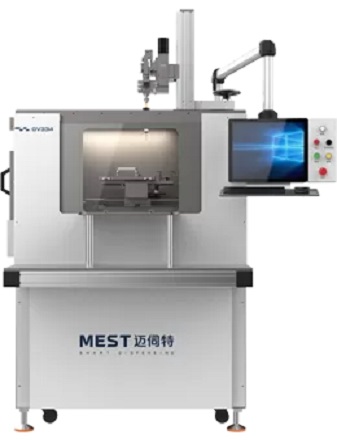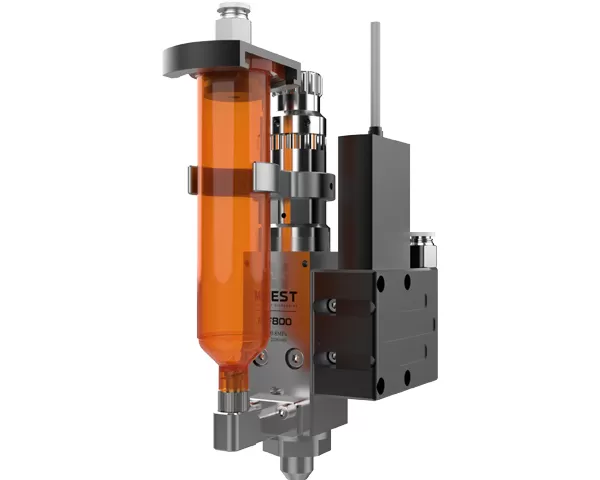In modern manufacturing, dispensing valves are essential tools for achieving precise liquid control and distribution. Whether in electronics assembly, automotive manufacturing, medical devices, or the production of everyday items, dispensing valves play an indispensable role. Through precise control and diverse designs, dispenser valves ensure the accurate spraying and distribution of every drop of adhesive, significantly improving production efficiency and reducing waste.
Pneumatic Dispensing Valve
A pneumatic dispensing valve is a type of dispensing device driven by a cylinder, commonly used in scenarios requiring high precision and stability. The pneumatic dispensing valve mainly consists of three parts: the cylinder, valve body, and material cylinder. Advanced sealing materials isolate the cylinder from the valve body, effectively preventing the adhesive from entering the cylinder and extending the equipment's lifespan. There are many types of pneumatic dispensing valves, among which the suck-back dispenser valve is an important branch. It uses upward movement to cut off the adhesive and instantly sucks back the adhesive when stopping, thus avoiding residue on the needle and reducing dripping and trailing, thereby improving dispensing precision and consistency.
Electric Dispensing Valve
An electric dispensing valve uses a pump body and drive part, characterized by simple structural design and good sealing performance. Through the rotor-stator structure, the electric dispensing valve does not affect the performance of the medium while achieving efficient transportation. The electric dispenser valve boasts an excellent self-sealing structure, easily realizing a suck-back function, ensuring clean, leak-free, and pollution-free dispensing every time.
The electric dispenser valve is driven by a motor, adjusting the rotor's directional rotation within the stator chamber to precisely dispense adhesive or other media. The single-screw structure used in electric dispensing valves maintains a stable flow rate, and the reverse function achieves a suck-back, ensuring no material waste during the dispensing process. This makes it suitable for high-precision automated production lines.
Working Principle of Pneumatic Dispensing Valve
Pneumatic dispenser valves are typically driven by air pressure to actuate the dispensing system. First, the adhesive is loaded into a pressure tank. Compressed air enters the pressure tank, pushing the adhesive into the feed tube connected to the material cylinder. In a suck-back dispensing valve, when the solenoid valve sends a signal, the dispensing valve piston moves downward, and the adhesive is pushed out through the material cylinder from the needle. Conversely, in a poppet-style dispensing valve, pneumatic control pushes the piston upward, extruding the adhesive from the needle.
By adjusting the solenoid valve's timing, air pressure, and piston stroke, the pneumatic dispensing valve can precisely control the quantity and position of each dispensing, ensuring high precision and consistency in the production process.
Working Principle of Electric Dispensing Valve
Electric dispensing valves are driven by motors and use a single-screw structure to transport adhesives. The self-sealing structure between the rotor and stator effectively prevents leakage, while not affecting the material during transportation. The rotor's directional rotation within the stator chamber ensures accurate adhesive delivery. Moreover, the motor's reverse function allows the electric dispensing valve to achieve a suck-back, further ensuring clean and drip-free dispensing.
As the demand for automated production increases, dispenser valves have become indispensable in modern manufacturing. Whether pneumatic or electric, these valves offer precise and reliable liquid distribution solutions across various industries, helping companies enhance production efficiency, reduce material waste, and improve product quality. If you are looking for high-performance dispensing equipment, Mest's series of dispenser valves will be your ideal choice. With their excellent performance and precise control, they will undoubtedly bring significant improvements to your production line.


